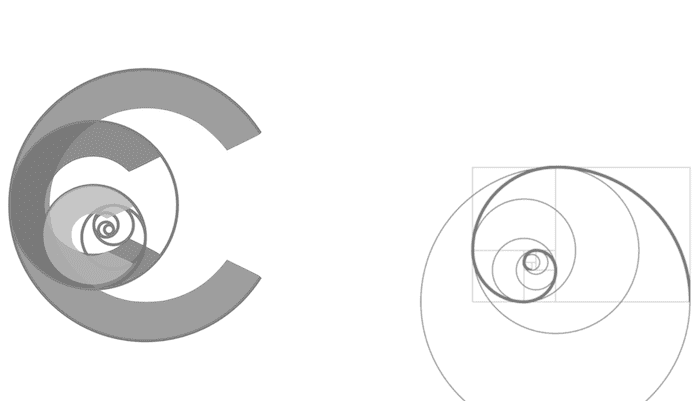Chronic Obstructive Pulmonary Disease
OVERVIEW
- COPD = chronic bronchitis +/- emphysema
- aka CORD (respiratory) or COAD (airways)
- environmental factors: tobacco smoke and air pollution
- host factors: balance between circulating proteases and antiproteases (alpha-1-anti-trypsin deficiency), anti-oxidants (vitamins A, C and E)
HISTORY
- COPD exacerbation symptoms – SOB, wheeze, sputum
- smoking
- exercise tolerance
- ADL’s
- home O2
- home CPAP/NIV
- respiratory medications + compliance
- steroid use
- heart failure medications
- frequency of hospitalisation
- mechanical ventilation
PRECIPITANTS OF AN EXACERBATION
- infective (bacteria = Pneumococcus, H. influenzae, Strep viridans, Moraxella catarrhalis, Mycoplasma pneumoniae, Pseudomonas, viruses = rhinovirus, influenza, parainfluenza, corona viruses, adenovirus, RSV)
- aspiration
- LVF
- sputum retention
- PE
- pneumothorax
- uncontrolled O2
- sedation
- non-compliance with medications
- nutritional (K, PO4, Mg deficiency, CHO excess)
- sleep apnoea
EXAMINATION
- steroid skin
- cachexia
- nutritional assessment
- plethora
- chest signs of severity: hyperinflation, accessory muscle use, cyanosis
INVESTIGATIONS
- previous ABGs: hypoxia, hypercapnia, metabolic compensation
- CXR: hyperinflated, flattened diaphragms, paucity of lung markings, PHT -> enlarged proximal lung markings
- electrolytes: especially tCO2 -> bicarbonate compensation in chronic hypercapnoea
- previous spirometry: FEV1/FVC – degree of emphysema, hyperexpanson, evidence of right and left heart failure
- formal pulmonary function tests: DLCO, flow-volume loops – concaved expiratory flow pattern
- ECG: right heart strain, RV hyperthrophy, P pulmonale, RAD, RBBB, ST depression or inversion in V1-V3
- Hb: polycythaemia
- high resolution CT: characteristic changes
Spirometry
- MILD = FEV1 50-60% predicted
- MODERATE = FEV1 30-50% predicted
- SEVERE = FEV1 <30% predicted
MANAGEMENT
- Uncontrolled O2 – may cause hypercapnic respiratory failure due to:
(1) shunting of blood to low V/Q units -> increasing dead space
(2) loss of hypoxic drive
(3) dissociation of CO2 from Hb (Haldane effect)
(4) anxiolysis and reduction in tachypnoea
Bronchodilators
- there is often a reversible component and also improves mucocillary clearance
- nebulised beta-agonists + aminophylline
Anti-cholinergics
- ipratropium bromide 500mcg NEB Q6hrly
- tiotropium (Spiriva) one PO OD
Steroids
- improves airflow obstruction in those requiring mechanical ventilation
- avoid when exacerbation clearly due to pneumonia without bronchospasm
Antibiotics
- accepted role when exacerbation secondary to infection
Secretion clearance
- chest physio
- nebulised mucolytic agents
- oropharyngeal/nasopharyngeal suctioning
- bronchoscopy
NIV
- those with hypercapnic respiratory failure
-> improved physiology
-> reduced need for mechanical ventilation
-> reduced length of stay
Mechanical Ventilation (if indicated)
- IPPV: avoid dynamic hyperinflation and barotrauma
-> low RR
-> low I:E (1:4)
-> support spontaneous breathing preferred to fully ventilated IPPV
-> titrated support to avoid respiratory muscle fatigue but avoid atrophy
-> aim for early extubation -> NIV
-> aim for PaO2 55mmHg
-> aim for normal PaCO2 (may have to allow permissive hypercapnoea)
-> measure DHI
-> measure PEEPi
-> discontinue futile therapies if not appropriate
References and Links
CCC Ventilation Series
Modes: Adaptive Support Ventilation (ASV), Airway Pressure Release Ventilation (APRV), High Frequency Oscillation Ventilation (HFOV), High Frequency Ventilation (HFV), Modes of ventilation, Non-Invasive Ventilation (NIV), Spontaneous breathing and mechanical ventilation
Conditions: Acute Respiratory Distress Syndrome (ARDS), ARDS Definitions, ARDS Literature Summaries, Asthma, Bronchopleural Fistula, Burns, Oxygenation and Ventilation, COPD, Haemoptysis, Improving Oxygenation in ARDS, NIV and Asthma, NIV and the Critically Ill, Ventilator Induced Lung Injury (VILI), Volutrauma
Strategies: ARDSnet Ventilation, Open lung approach, Oxygen Saturation Targets, Protective Lung Ventilation, Recruitment manoeuvres in ARDS, Sedation pauses, Selective Lung Ventilation
Adjuncts: Adjunctive Respiratory Therapies, ECMO Overview, Heliox, Neuromuscular blockade in ARDS, Prone positioning and Mechanical Ventilation
Situations: Cuff leak, Difficulty weaning, High Airway Pressures, Post-Intubation Care, Post-intubation hypoxia
Troubleshooting: Autotriggering of the ventilator, High airway and alveolar pressures / pressure alarm, Ventilator Dyssynchrony
Investigation / Indices: A-a gradient, Capnography and waveforms, Electrical Impedance Tomography, Indices that predict difficult weaning, PaO2/FiO2 Ratio (PF), Transpulmonary pressure (TPP)
Extubation: Cuff Leak Test, Extubation Assessment in ED, Extubation Assessment in ICU, NIV for weaning, Post-Extubation Stridor, Spontaneous breathing trial, Unplanned extubation, Weaning from mechanical ventilation
Core Knowledge: Basics of Mechanical Ventilation, Driving Pressure, Dynamic pressure-volume loops, flow versus time graph, flow volume loops, Indications and complications, Intrinsic PEEP (autoPEEP), Oxygen Haemoglobin Dissociation Curve, Positive End Expiratory Pressure (PEEP), Pulmonary Mechanics, Pressure Vs Time Graph, Pressure vs Volume Loop, Setting up a ventilator, Ventilator waveform analysis, Volume vs time graph
Equipment: Capnography and CO2 Detector, Heat and Moisture Exchanger (HME), Ideal helicopter ventilator, Wet Circuit
MISC: Sedation in ICU, Ventilation literature summaries

Critical Care
Compendium
Chris is an Intensivist and ECMO specialist at The Alfred ICU, where he is Deputy Director (Education). He is a Clinical Adjunct Associate Professor at Monash University, the Lead for the Clinician Educator Incubator programme, and a CICM First Part Examiner.
He is an internationally recognised Clinician Educator with a passion for helping clinicians learn and for improving the clinical performance of individuals and collectives. He was one of the founders of the FOAM movement (Free Open-Access Medical education) has been recognised for his contributions to education with awards from ANZICS, ANZAHPE, and ACEM.
His one great achievement is being the father of three amazing children.
On Bluesky, he is @precordialthump.bsky.social and on the site that Elon has screwed up, he is @precordialthump.
| INTENSIVE | RAGE | Resuscitology | SMACC
